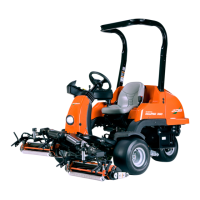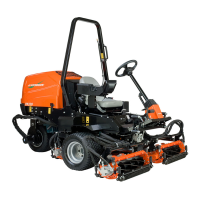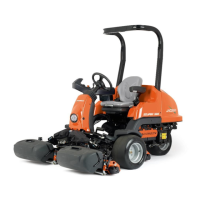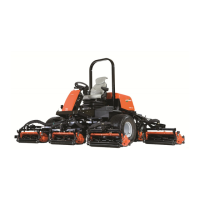en-55
OPERATION 6
6.13 MOWING ON SLOPES __________________________________________________
The mower is assembled for good traction and stability
in normal conditions. For operation on wet grass and
gradients use caution, vehicle control.will be
decreased in these conditions.
1. Always mow with the engine at full throttle, control
forward speed with the traction foot pedal.
2. Use the weight transfer control to improve the
weight distribution between decks and mower.
3. If traction is lost turn the mower on to a lower
gradient.
4. If the mower continues to move or mark the turf,
the slope is more than the normal limit.
Do not try to move toward the top, move backward
slowly.
5. When you move across a slope, to keep the
vehicle stable lower equipment to the ground.
Correct tyre pressure is necessary for maximum
traction. See Specification.
WARNING
The vehicle can turn over in some conditions.
The method for the correct operation on the
gradients and terraces is:
1. To travel up and down the face of the slope
(vertically) but not across the face
(horizontally).
2. Do not make a turn that is not necessary.
3.Travel at decreased speeds and look for
hazards.
For best stability, always cut with all three units.
Degrees are shown to the nearest 1/4”.
General slope of roadway embankment - 45°
Steepest grass area - 31°
Slope of average roof - 19-1/4°
2nd class highway maximum grade 4-1/2°
Toll road or freeway - 1-3/4°
A = Maximum Allowed Slope
A = Maximum Allowed Slope
